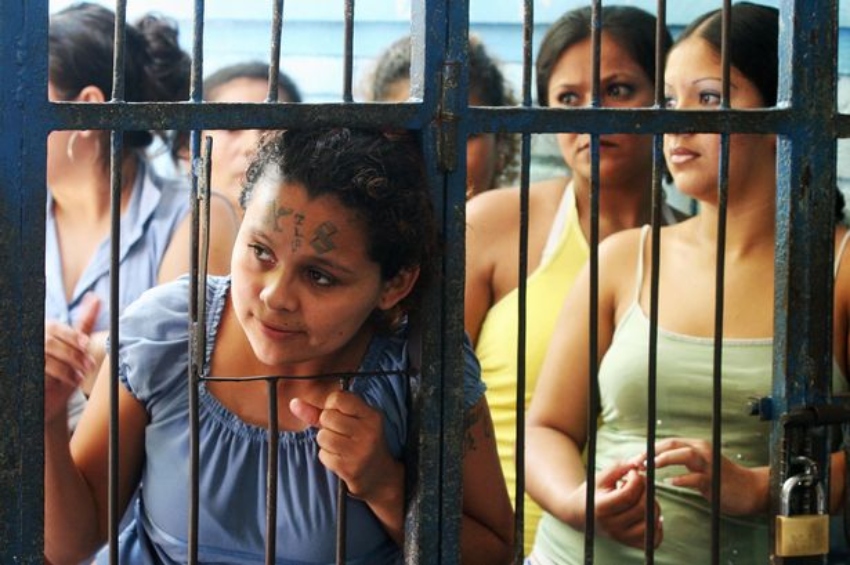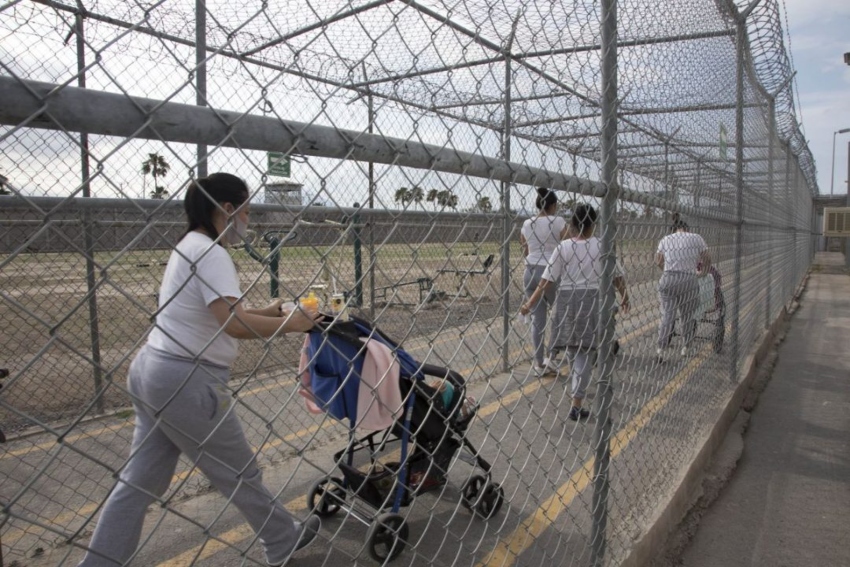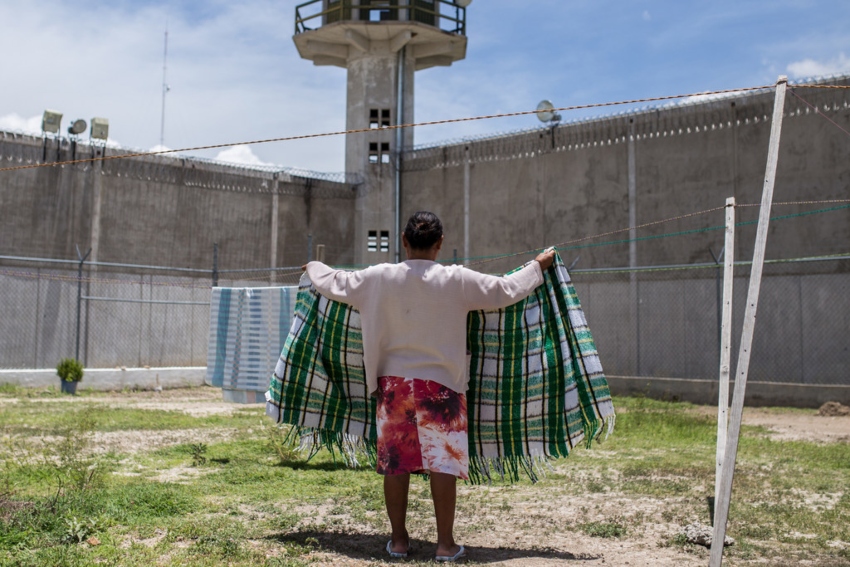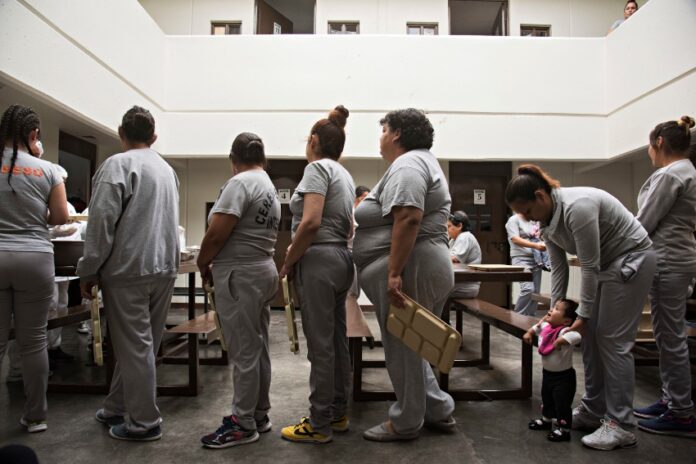In October, I attended a yoga retreat in Malinalco that gathered a diverse group of people, most of them Mexican. One afternoon, while lounging by the pool during free time, a conversation unfolded about whether women feel safe in Mexico City. As the women began sharing personal anecdotes, the discussion shifted toward an unexpected subject: women in prison.
A psychologist, María Sotres, explained that she had spent nearly three years working in women’s prisons as the former Directora del Programa Integral de Reinserción Social (Director of the Social Reintegration Program) for La Cana, an organization that provides workshops, creative job training, mental health support, education and legal aid to incarcerated women.

As she spoke, we found ourselves captivated by stories that exposed unsettling truths not only about Mexico’s penal system, but about the broader gender inequalities that shape women’s lives throughout Mexican society.
Gender and the prison system
Today, roughly 15,261 women are incarcerated in Mexico — only about 6.1% of the total prison population. Yet María described a striking double standard: outside men’s prisons, long lines of visitors — mothers, sisters, grandmothers, brothers — wait with oversized stuffed animals and gifts. By contrast, the visiting areas of women’s prisons are nearly deserted. Many incarcerated women go years without a single visit.
Families often frame men’s crimes with sympathy or excuses, while women are scorned and abandoned. It’s a stark illustration of the patriarchal norms and gender biases that continue to shape life — and punishment — in Mexico.
Why women end up behind bars
In Mexico, theft is the leading cause of female incarceration, followed by kidnapping, homicide and drug-related crimes. But as Sotres points out, many of these cases are not as clear-cut as they seem. Often, they are crimes of survival — acts of self-protection or desperation — and the data support her observations.
Most incarcerated women come from backgrounds marked by poverty, limited education and social exclusion. Many carry histories of gender-based violence — physical, emotional or sexual — frequently at the hands of partners or family members. These experiences don’t just precede their time in prison. They often play a direct role in the very crimes for which they are convicted.
Abuse, economic dependence and coercion often push women into illegal activities. Some are pressured by male partners to participate in drug trafficking or theft. Others end up taking the blame for crimes committed within their households or by organized groups led by men. It is not uncommon for women in prison to have suffered sexual violence, including rape, before their incarceration.

Another recurring theme is familial responsibility. Many of these women were the sole breadwinners, struggling to keep households afloat after being abandoned by partners or left with children to care for. For some, the path to prison began with a decision made under pressure. Stealing to feed a family, or submitting to a relative’s demand to carry out a crime.
The result is a system where women are punished not only for breaking the law, but for carrying the compounded weight of poverty, abuse and patriarchal double standards.
Guilty until proven innocent
Another disturbing thing to learn was that under Mexico’s Constitution and criminal procedure laws, judges can impose prisión preventiva (pretrial detention), which is justified using judicial reasoning (prisión preventiva justificada) and automatic for certain crimes. Mexico has one of the highest rates of pretrial detention in Latin America, with roughly four out of 10 prisoners awaiting trial, but not yet convicted. People can spend months or even years in detention before their case is resolved, often longer than the maximum sentence for the alleged crime.
While there are cases in the United States where suspects can be detained if judicially demonstrated to be violent or flight risks, Mexico’s pretrial detention system requires judges to automatically jail people for certain offenses, without assessing individual risk or case circumstances. It deprives suspects of liberty based on accusation rather than proven guilt. There are documented cases in Mexico where innocent people have spent years in prison, with many only being released after years of pretrial detention when their innocence was finally proven.
In Mexico, about 49%-53% of incarcerated women are held in pretrial detention, compared to 40%-49% of incarcerated men. This means women are more likely than men to be jailed without a conviction while awaiting trial, and they also tend to spend longer periods in pretrial detention than men. Women are also more likely to receive harsher sentences due to a lack of gender perspective within the legal system.
Babies in jail: The children of incarcerated women
A shocking ten percent of incarcerated women have been pregnant while in custody. Many of these pregnancies result from conjugal visits with partners, and in most cases, women give birth behind bars. By law, they are allowed to keep their children with them until the age of three. Mother and child live together around the clock in small sections of the prison designated for women with children. These spaces are restrictive: children grow up subject to the same rules as their mothers, from the number of clothes they can own to the kinds of foods they are allowed to eat. There is no access to formal education or stimulation beyond the confines of prison life, and the developmental costs are profound. One study notes:

“The first three years of a person’s life are among the most critical for development … The consequences of exposure to adverse situations in this period can manifest during adulthood in the form of diseases such as obesity, diabetes, depression and post-traumatic stress, among others.”
Sotres recalls speaking to one child about colors and realizing the child could name only blue and beige. The child had learned the palette of her world from the grey-blue of prison walls and the beige of uniforms.
Glimmers of hope and humanity
When I asked Maria whether the challenges, gender injustice and systemic difficulties ever caused her to lose faith, she surprised me with her response. Far from feeling discouraged, she described witnessing remarkable moments of humanity and kindness behind bars. During one workshop she was leading, when a transgender man introduced himself as Rosa, she recounts, the other women called out “No! Tell her your real name!” urging him to be proud, until he shyly re-introduced himself as Jesus — revealing the supportive environment that stood in contrast to men’s prisons, where transgender people must be separated from the main prison population for their own safety.
She also spoke of the women’s agreements of nonviolence, pacts they made with one another to avoid fights, and of the eagerness to learn. Classrooms were always full. And she emphasized the importance of what happens after prison. La Cana not only runs workshops inside prisons – knitting, sewing, embroidery – where women receive fair payment for their work, but also meets them at the prison gates upon release to make sure they are safe, housed and able to find employment. They even bring work to women under house arrest with ankle monitors. According to La Cana, 97% of women who participate in these programs do not return to prison.
Despite inequalities, change is possible
While Mexico’s justice system continues to reflect the deep inequalities that define women’s lives, the work of organizations like La Cana proves that meaningful change is possible. In the end, these accounts remind us that even in the most unlikely places, compassion can flourish.
You can purchase products handmade in prisons by Mexican women at La Cana’s website, or find out about other opportunities to help at www.lacana.mx.
Monica Belot is a writer, researcher, strategist and adjunct professor at Parsons School of Design in New York City, where she teaches in the Strategic Design & Management Program. Splitting her time between NYC and Mexico City, where she resides with her naughty silver labrador puppy Atlas, Monica writes about topics spanning everything from the human experience to travel and design research. Follow her varied scribbles on Medium at medium.com/@monicabelot.
